#linnaean gardens
Explore tagged Tumblr posts
Text
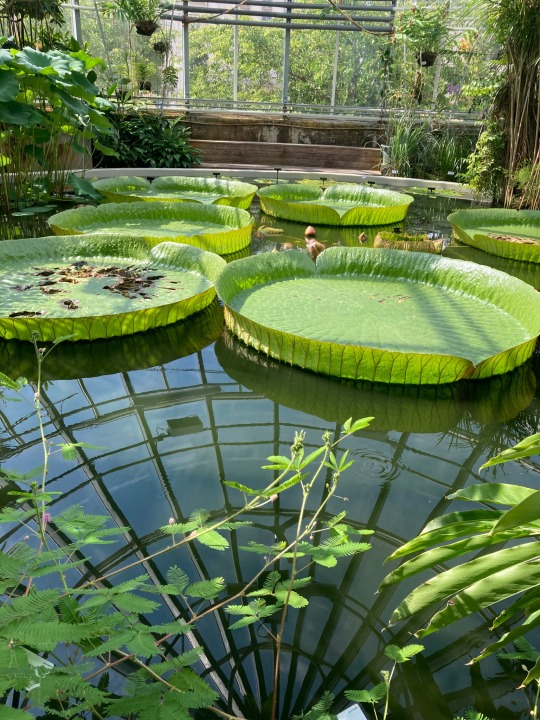
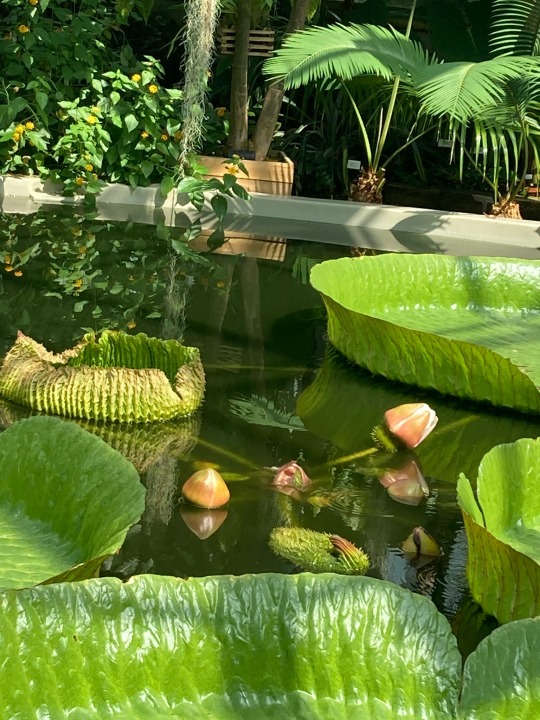
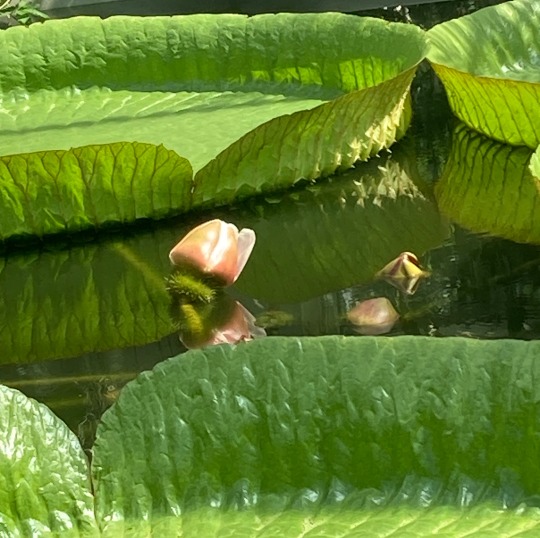
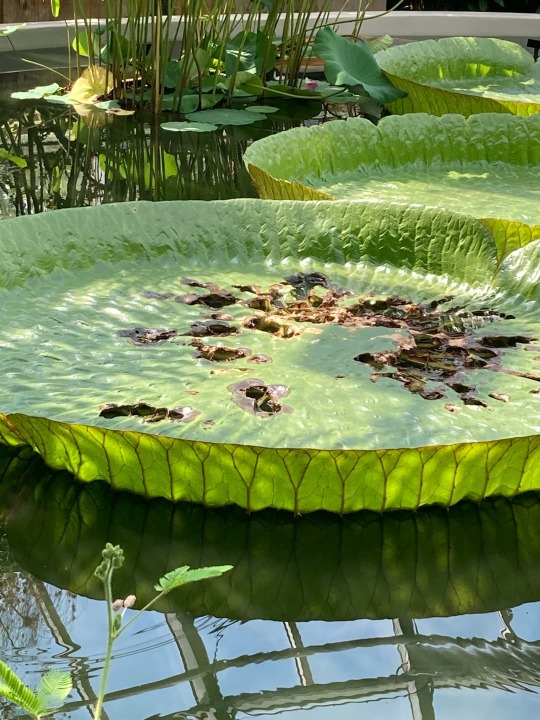
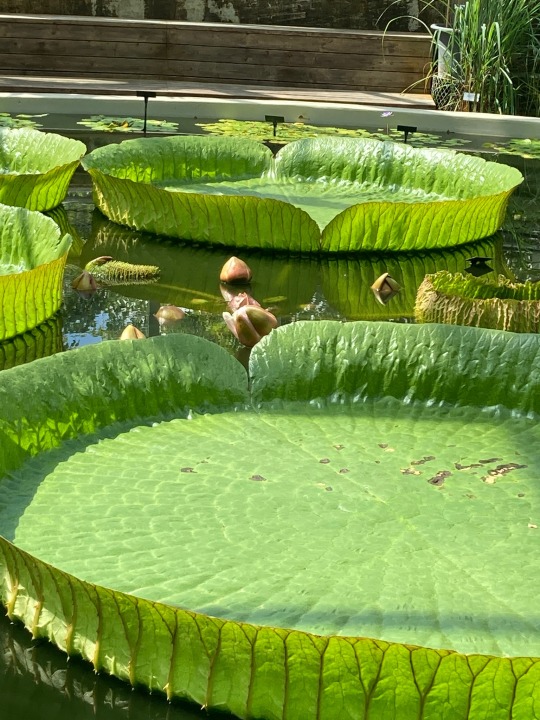
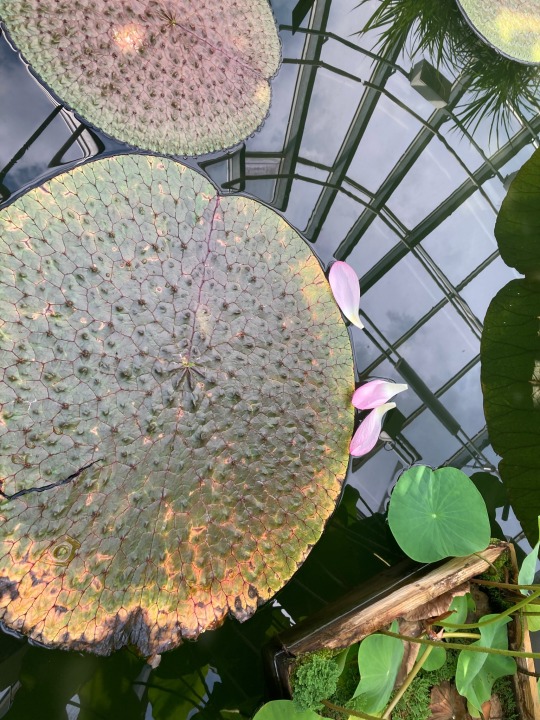
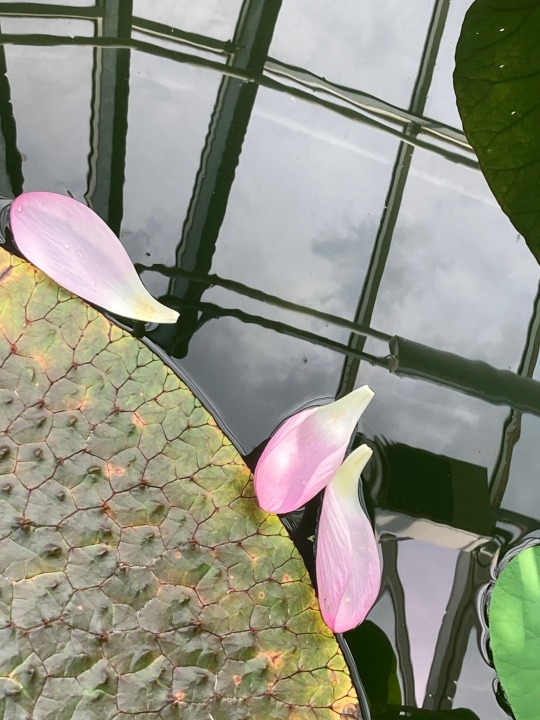
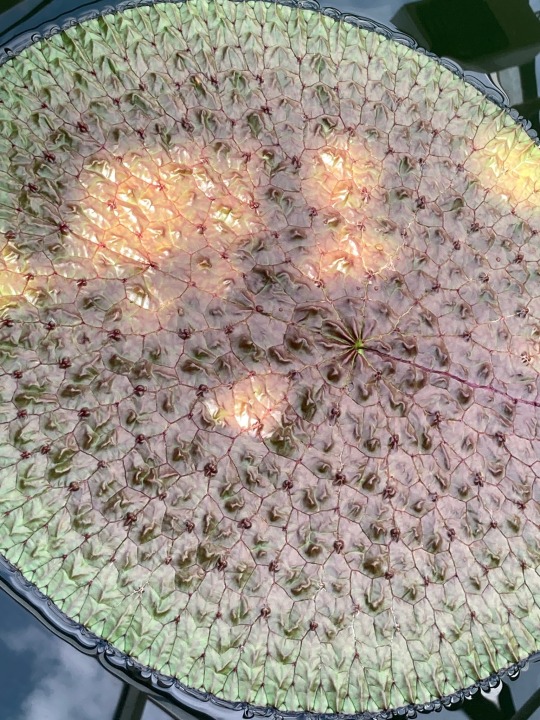

#prickly water lily#fox nuts#gorgon plant#makhana#euryale ferox#water lilies#fallen petals#giant lily pads#aquatic plants#greenhouse#linnaean gardens#botanical garden#uppsala#sweden
34 notes
·
View notes
Text
"The scribes of the Middle Ages wrote predominantly in iron gall ink, the product of an elegant four-ingredient recipe. Certain wasps implant their eggs in the leaves and smaller branches of oak trees. This process produces in the tree a gall: a lump of tannin-rich material in which the larvae grow. When ground and boiled in water with a sprinkle of iron sulfate and some gum of arabic, the mixture of insect and vegetable chemicals in the gall with the mineral of the iron forms a pigment stable enough to carry around in a little flagon and acid enough to stain parchment for a few millennia. "It’s not hard to find the ingredients, as long as you know what to look for. To learn about oak gall, an aspiring European ink maker would consult a botanical guide called a herbal. Just as useful to a nun in her walled herb garden, a commercial pharmacist, and a parent in a medical emergency, the herbal was in high demand but, until the advent of the printing press, expensive to produce. Publishers in the earliest years of mechanical printing activated this latent market, and herbals became one of the first popular printed nonfiction genres. These pre-Linnaean textbooks established graphic design protocols that have shaped the way curious minds learn and process plant science ever since."
"Aloe, Basil, Cash Crop," Jo Livingstone

Perceptions of Medieval Manuscripts, Elaine Treharne
138 notes
·
View notes
Photo


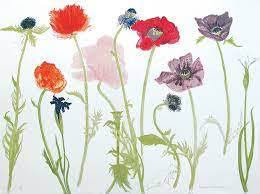

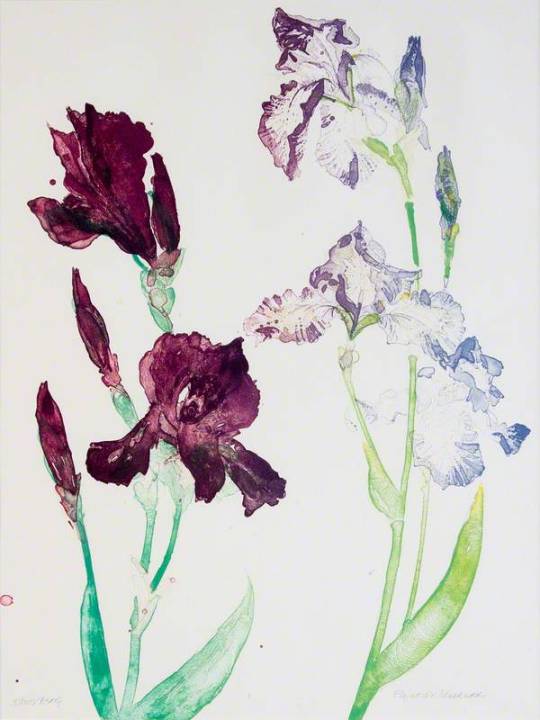

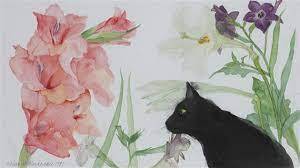
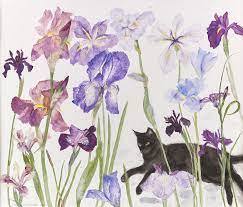


Elizabeth Blackadder (1931 - 1921 , UK)- Celebrated artist admired for her paintings of flowers and the first woman to be elected to both the Royal and Royal Scottish academies, a long interesting article by Charles Darwent, which gives great insights in her seemingly dated art.
"In 1994, the year that Damien Hirst made his first vitrined sheep, Away from the Flock, pickled in formaldehyde, the artist Elizabeth Blackadder, who has died aged 89, finished a work called Still Life With Cats. The cats were painted in oil on canvas, joining many others in Blackadder’s oeuvre, alongside arum lilies, Japanese fans and tins of sweets.
Mere difference of age does not explain the gap between Blackadder’s art and Hirst’s. Painters of her own generation – Bridget Riley was born in the same year, 1931 – worked in a style that was insistently modern. This was not Blackadder’s way. When she and her husband, the artist John Houston, visited New York in 1969 on the way to paint the Wyoming landscape, they made trips to the Museum of Modern Art to see Picasso and Matisse, not Pollock and Warhol. Modern art institutions returned the compliment: there are only half a dozen or so Blackadders in the Tate, all but one of them lithographs, few ever on show and none more recent than 1963. The British Council Collection holds only two Blackadders, the Arts Council’s none at all. And yet, there is more to the story than meets the eye.
At first glance, a painting such as Iris Oncocylus (1996), in the collection of the National Gallery of Scotland, is not so much unapologetically outdated as defiantly so. Where Georgia O’Keeffe defeminised flower-painting by making oils of lilies that looked like vulvas, Blackadder’s watercolour irises might have been painted by an unusually adept aunt. A second look shows something more complex. Blackadder’s eye is not so much meticulous as engineered: this is botanical painting rather than flower painting. The disposition of her flowers on the paper is just that, a disposition rather than an arrangement.
In an untypically expansive moment, Blackadder hazarded that “the space between flowers [in her work] is as important as the flowers themselves”, adding that her pictures invented themselves as they went along. The two-dimensional sculpturalism of her irises owes more to Matisse than it does to, say, the flower painter Mary Butler. If Blackadder’s flowers are representational, the voids they create are abstract.
Daughter of Thomas and Violet Blackadder, she came from a family of Falkirk engineers. Her father’s factory in the town, Blackadder Brothers’ Garrison Foundry and Engine Works, had been built by Thomas’s own grandfather in 1851. Elizabeth was born in its shadow, in a sandstone villa at 6 Weir Street.
In later life, she refused to talk about her art. If forced to do so, she spoke in the kind of commonsensical terms that would have had conceptualists such as Hirst in tears – “I paint the centre of my flowers black,” Blackadder might say, adding, in a rare confessional burst, “Well, a kind of bluey-black.” She did, however, admit to having had an early teacher. “My father was an engineer, but he drew a lot, mostly boats,” she recalled in a BBC interview to mark her 80th birthday. “From a young age, he helped me to draw.” Blackadder’s father died when she was 10.
Another childhood influence was also familial. During wartime German bombing of Clydebank, Falkirk being on the bombers’ flight path, the young Elizabeth was dispatched by her mother to her grandmother’s house on Holy Loch. “I got sent out as a gardener for all [her] friends,” Blackadder would wryly recall. By her teens, she knew the Linnaean names of all the local wildflowers, and had pressed most in an album. This dual inheritance was to appear in her work as an artist.
After leaving Falkirk high school, she joined the new joint fine-and-applied arts course at Edinburgh University in September 1949, where the Byzantinist David Talbot Rice was her tutor. Blackadder found herself exposed to the Byzantine obsession with pattern, a taste at once formal and decorative. Another discovery was the Italian primitives, particularly Piero della Francesca. In her final year, spent at the Edinburgh College of Art, she met Houston, a fellow student. When Blackadder won a travel scholarship with her first-class degree, the pair set off for Italy. They were married in Edinburgh the following year, 1956, a partnership that was to last until Houston’s death in 2008.
22 notes
·
View notes
Text
The paradise myth was therefore attached to the Caribbean’s status as a cornerstone of the European “primitive accumulation” of wealth. [...] [T]he American Eden continued to be romanticized by English poets [...]. As long as the fantasy of [...] profit and accumulation of wealth persisted, paradise discourse survived, incorporating the trope of the plantation when the age of exploration, conquest and piracy came to end and the means of production were transformed. [...] “[T]hroughout the history of the New World, the dream of paradise and the noble savage has coexisted with the history of colonization and forced labour” [...].
From the 16th century onwards, rhetoric of paradise increasingly appeared outside the context of the New World in connection with other potential “treasure-lands” - the African gold-land of Ophir, the ivory-lands of the Congo, the pearl-beds of Ceylon - anywhere European colonizers believed they could acquire raw materials [...]. Even after the 19th-century abolition of the slave-trade, colonizers employed indentured labour to run the tea plantations and pearl-diving stations of Ceylon and hired slaves from Zanzibar to travel with them into the interior of East Africa. In the rhetoric of colonization and conquest, paradise operates on various levels, as a descriptor of “new” landscapes, a plan for colonies, or an earthly kingdom [...] into which Indigenous people should be inducted [...]. Paradise discourse is confined to neither the Caribbean nor the plantation [...].
---
The beginnings of European modernity were marked by a dawning recognition of the impossibility of returning to the Golden Age [...]. However, the Renaissance also saw the proliferation of "collective fantasies” such as the Land of Cockaigne and the Fountain of Youth, and an increasing infatuation with the complicated, anti-natural aesthetic of the botanical garden. [...] Jeffrey Knapp attributes the flowering of literary utopias such as Thomas More’s Utopia (1516) and Spenser’s Faerie Queen (1590-6) as a response to the widening global framework of trade and travel and the complexities of empire. Tropical islands and colonies were used as symbolic locations on which to project the contradictions of European expansion [...].
---
The fluctuation between paradise and anti-paradise reflects the 17th-century aesthetic transition away from the mystical or supernatural towards empirical knowledge of the negative realities of the colonies and predicts the rise of scientific knowledge [...]. In the 17th century, the axis of literary interest in foreign landscapes began to shift away from the Americas towards the East [...]. Biblical and classical language remained entrenched [...] but transformed from theological signs into metaphorical shorthand for the global variety and riches unlocked by colonial expansion: paradise did not disappear, just became secularized.
The hope of discovering fabled utopias was replaced with the intention of building new utopian settlements and plantations under their name [...].
The rise of Linnaean classification dictated a further secularization of paradise discourse within the framework of natural history, as “Edenic edifices” were forged in the writing of naturalists who moved through the world like “Adam in the primordial garden,” naming and “innocently” collecting specimens (Pratt 56-7).
---
The “planetary consciousness” produced by this systemizing of nature [...] increased the mobility of paradise discourse in application to different regions and continents. As European colonial expansion accelerated, the homogenizing transformation of people, economy and nature which it catalyzed also gave rise to a myth of lost paradise, which served as a register [...] for obliterated cultures, peoples, and environments, and as a measure of the rapid ecological changes, frequently deforestation and desiccation, generated by colonizing capital.
On one hand, this myth served to suppress dissent by submerging it in melancholy, but on the other, it promoted the emergence of an imperialist environmental critique which would motivate the later establishment of colonial botanical gardens, potential Edens in which nature could be re-made.
However, the subversive potential of the “green” critique voiced through the myth of endangered paradise was defused by the extent to which growing environmental sensibilities enabled imperialism to function more efficiently by appropriating botanical knowledge and Indigenous conservation methods, thus continuing to serve the purposes of European capital.
---
All text above by: Sharae Deckard. Paradise Discourse, Imperialism, and Globalization: Exploiting Eden. 2010. [Bold emphasis and some paragraph breaks/contractions added by me. Presented here for commentary, teaching, criticism purposes.]
#4thofjuly had me thinking of this#age of revolutions in Atlantic World#abolition#imperial#colonial#caribbean#ecology#forests#temporality#indigenous#fave#black atlantic#paradise discourse exploiting eden#kathryn yusoff#tidalectics#archipelagic thinking#geographic imaginaries
730 notes
·
View notes
Photo



Erasmus Darwin (1731-1802) first published The Botanic Garden: A Poem in 1791, in which he used the Linnaean System of botany as a basis to creatively write about the physiology and sexual lives of plants. This two-volume edition was published in 1799 and is bound in tree calf leather, a binding style created when calf leather is stained and polished to resemble wood grain.
Images from:
Darwin. Erasmus. The Botanic Garden: A Poem. London : printed for J. Johnson..., 1799.
Call Number: PR3396 .A62 1799
Catalog Record: https://bit.ly/3EDUtrt
103 notes
·
View notes
Text
Random and unorganized thoughts™ about houseplants and OMFD
As a longtime hobbyist and plant professional, I’ve had a lot of these thoughts kicking around my head and adhd brain decided that 12:30 AM was the time, so here we gooo
Disclaimer: I have no formal horticultural training or anything, I’m just someone with a deep love of houseplants and a ND brain prone to info diving, who has managed a plant shop for a few years. This is just a combination of stuff I already knew and some light googling. Also between last night’s supermoon and Ao3 being down I am TIRED so a lot of this might be totally incoherent. Sryyyy
While people have always kept potted plants (usually for medicinal or culinary reasons), the species we commonly keep as houseplants became known to Europeans for the same reasons that piracy flourished—colonization and imperialism. the vast majority of common houseplants are tropical understory plants endemic to Asia, Africa, and the Americas. Plants are just another thing white people took during this period.
Botany as we know it in the Western world would well and truly become A Thing roughly twenty years after the events of OFMD, when Carl Linnaeus published the Systema Naturae in 1737 (Stede is a little ahead of his time with his whole Gentleman Naturalist persona). By the end of the 18th century, botanic gardens were also very much a thing, showcasing the new Linnaean classification system, as well as “rare” and “exotic” specimens Europeans had taken from colonized places.
Linnaeus’s Systema Naturae was what made binomial Latin naming (scientific names) a thing, so Stede giving the scientific name of the moth is anachronistic (although one of the least anachronistic things on the show—again, only off by about twenty years).
Buttons is also ahead of his time here, giving the scientific name for Bluefish, but if OFMD tried to tell me that Buttons was Linnaeus’s long-lost father I would absolutely not question it
(Btw, the scientific name Stede gives for the moth is a slightly altered version of a real moth that does exist, but wasn’t formally described in scientific publications until decades later. The common name he gives is totally made up.)
I can’t quite identify the species of fern Stede loots from the fisherman, but ferns are considered generally pretty finicky houseplants today. They need to be kept lightly moist without being soggy, and most species prefer greenhouse/terrarium levels of humidity that can be hard to replicate in modern homes. Interestingly, ferns were incredibly popular houseplants in the past, since older homes didn’t have our insulation or HVAC systems and were less dry. So it is a good choice for an 18th century ship in the Caribbean, which I have to imagine would be quite a warm and moist location. (Fern collecting, specifically, was a trend in the Victorian era, as was the rise of the Gentleman Gardener, where wealthy men would have things like canes with secret pruning shears that popped out of the end. Stede would have loved it.)
A fern is also a poignant symbolic choice because, as previously noted, these are not plants you can just set and forget—they need frequent, steady watering, and on a ship I have to imagine that would be a small but important sacrifice, using fresh water stores!(They are also lower light plants that can’t tolerate full sun—good for Stede’s cabin, which is not the MOST brightly lit during the day—and symbolic of an interior life that we don’t bring out into the light.) The idea of choosing to nurture yourself and those in your community in small but important ways certainly resonates with the themes of the show.
THAUMATOPHYLLUM BIPINNATIFIDUM
The way we classify plants has changed a lot since Linnaeus. Back then, plants were classified based on apparent shared characteristics, which was limited by the technology of the time—people were making calls based on field drawings, or pressed and dried samples, so they got a lot of things wrong. Today, DNA technology has cleared up a lot of things, and as a result, plants get moved from one genus to another, or whole new genera get created.
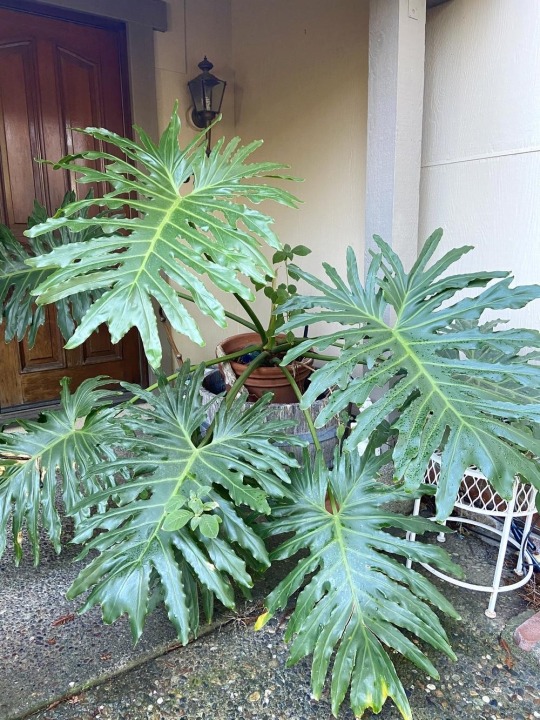
One example is one of the plants you can see plenty of during the treasure hunt—Thaumatophyllum bipinnatifidum, formerly known as Philodendron bipinnatifidum. This change was only made in 2018, so you’ll still see it listed as Philodendron in most plant shops. (All plants in Thaumatophyllum were formerly members of a subgenus of Philodendron.)
Another annoying thing about colonial-era plant naming that still keeps certain plant shop managers named me up at night over three centuries later: sometimes colonial dickfucks would both “discover” the same plant and give it different names (often naming after themselves, ofc). So to this day, we’re striking redundancies from the record. This happened (before the genera switch) with the above-mentioned species Philodendron bipinnatifidum and Philodendron selloum, which is why you also still see this plant sold as Philodendron selloum. (In case you’re wondering, when this happens, whichever species was formally described first gets to take over the name.)
This species is actually from South America, but has naturalized all over the place, including Florida, so it doesn’t strike me as out of place in those scenes. I’m not certain of when naturalization would have occured, but I can guess that colonization and trade sped it right along.
9 notes
·
View notes
Text
Saturday 30 June 1838
8 ¼
11 20
fine morning F66 ½° at 9 ¼ am all ready for being off and breakfast at 9 ¾ - afterwards at accounts till now 10 ¾ - A- and I out at 11 – just peeped in the church of St. Dominic neat small good modern style church (arcaded – style of St. Pauls’, London) – then to the musée de histoire naturelle – nothing particular but among the ‘silicium’ 2 quartz hyaline crystals tournés en tire-bouchon – about 7in. long – a solid corkscrew so regular, could scarce believe the man who persisted in it they were natural – the grasshoppers (Santerelles) merely hop about – make no noise – Les cigales make the noise (a sort of beetle with large wings?) – the musée d’histoire naturelle several rooms above – the musée des antiquités below it – one room then at the latter ½ hour till 12 ¼ - nothing very particular – old Roman cippi in abundance and bits of frieze and cornices (Corinthian) – one cippus with little conical column in the middle of the little pediment – a little whole length figure holding (left hand) little conical column rising out of fleur de lis (lotus?) – the figure standing on this ceppus about 6 yards from the entrance door, right on entering – stood looking in at shop windows as we walked along and at the jardin botanique (from the musée des antiquities) in 22 minutes at 12 47 – had the jardinière chef (Pierre Comme) from 1 to 1 ¾ and gave him 1/50 très content – to explain to us the trees we did not know – the herbaceous plants all ticketed – the system of Jussieu only just adopted – some few of the tickets not yet affixed – all was before classed according to Linnaean – the garden small but very nicely kept and arranged – nothing in the serres which seem tolerable – asked for and brought away branches of t
he micocoulier, common, une fruit petite baie noire 1 on a little ½ in long stalk
dornus ditto ditto ditto ditto ditto 14 to 16 more or less clustered like mountain ash
Diospyrus une petite prune [joune] bonne quant elle est bien pourrie – like a sweetmeat the very thing I ate in 1830 at Toulouse and never could see or make out since –
3 or 4 very fine Sophora japonica trees very like acacias
Colythea, Throps’ bloodacina – Juglans noir nigra hard large black nut (hickory of north America?)
Ditto Oleaformis olive shaped good edible nut
SH:7/ML/E/21/0135
Murier with large thick crassulent leaves – fruit black and large – In returning bought white metal teapot chez David Johnstone or the person who sells for him – connected with the Consul Scotts – a large wine merchant here, and has lately set up a pottery (faience and china manufactory) and employs 300 people – very good of Bordeaux now that there is no commerce – the woman said the shipping trade was ill off – everything of commerce is bad at Bordeaux now and has been the 2 years – went to our booksellers’ – Mérats’ botany not to be had in Bordeaux – then walked round the arcades of the great theatre and came in at 3 – had la maitresse d’hotel for sometime – a very nice civil person – told her I thought her Inn one of the best on the continent – Off from the hotel de Rouen at Bordeaux (very good hotel) at 4 3 – annoyed to recollect before getting out of the town that I had forgot to ask for and pay our valet de place of yesterday Pierre...... Bouscaut merely Lat poste and a lit debit de Tabac opposite, and 2 or 3 houses a couple of hundred yards off – Between Bouscaut and Castres several large plantations of pine (Scotchy) what espéce? at Castres at 5 55 nice little town – very nice country – very fine day – very fine afternoon – vines tall – old ceps (stems) – now at 6 10 1st Olive tree? growing against end of cottage – greed hedges and acacias line the road on both sides and vines right and left, and on the beautiful well-peopled line of high hill-bank (right bank) of Garonne – now at 6 ¼ fine remain of old gothic castle 8large round tower etc) and village very picturesque on the hill side in the distance on the other side the river – very high vine-props all hereabouts – 8 or 10ft. high – many of them (willows and poplars) growing – fine rich vale (left) up to Garonne flowing at some distance from us and quite out of sight – till 6 40 reading Galignanis’ messenger got at the post office yesterday of 13, 16, 18 and 19th instant vide messenger of 13th instant – Fire proof house vide Lady Heste Stanhope still living – Cerons at 6 48 la poste and 10 or 12 scattered houses – among the rest a maison d’education, a little auberge, and an auberge-like hotel (cheval blanc) and a farm – housing hay (hay grass everywhere hereabouts) with a pair of oxen – and hay both in cock and grass still to cut – at 7 ¼ met 2 ladies riding aside – (the ladies aside, the peasants astride?) – the right bank of the Garonne studded with villages and houses - quite a vineyard garden – very picturesque – at 7 40 another lady rides aside – Langon at 7 50 and alight at the poste for the night – Bazas 1 3/4p. farther would be too late for A- to dine – will breakfast there tomorrow and see the cathedral – Bazas formerly a bishop’s see – dinner at 8 50 (wrote out about ½ of today before dinner) – very comfortable – good dinner and 2 rooms opening into each other – had had Josephine and written so far at 10 55 p.m. at which hour F68° - very fine day – note tonight by a postilion I suppose to ask me to pay Pierre what I pleased thro’ the maitre de poste here – bon – this sets me at ease about it -
3 notes
·
View notes
Text
Dijon to Mont Sous Vaudré
Saturday 28 June 1834
5 50/..
10 55/..
With her from ten to eleven and a quarter and a long very good kiss to her and tolerable to me Fine morning Fahrenheit 57½ at 6 10/.. breakfast at 7¼ wrote the last 15 lines till 8¾ -
Hotel de la Cloche very comfortable – good eating – attentive civil people – Miss Walker and I out at 9¼ - cathedral – good old gothic church but not so handsome as Notre Dame we saw last night –
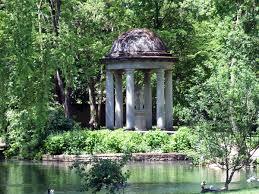
Botanic Garden Dijon Source fr.wikipedia.org
At the botanic garden called Jardin des plantes at 9 40/.. the old one given up and this new one not quite finished – approached thro’ a piece of nicely laid out, wooded (with large trees) piece of ground in which boys were playing, and seeming to belong to a good pile of brick building adjoining the garden – perhaps (from the nº of beds in a room) a school – much pleased with the garden – only wish it were larger – (a square of about 3 or 4 acres?)
All the trees, shrubs and flowers planted quite recently – a winding stream all thro’ (across from corner to corner) the garden with a little basin and boat on it – 2 or 3 pieces of prêtty rock-made mount, and a gothic seat hide the end wall, too little distant as one faces it on entering – small but picturesque serres near the top of the garden, nicely placed the right side wall on entering flower beds (as at the Jardin des plantes Paris) laid out in narrow stripes but looking more soignés from being all box-edged and having 2 foot gravel walks between –
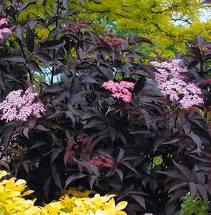
Sambucus Nigra Source Gardening Express
All the plants ticketed (Linnaean System?) Sambucus nigra com[mon] Elder – Fedia, (forget-me-not?) Dipsacus, teazle – Cineraria Maritima (white velvety stalks and leaves [?] ragged, like senecio, dogs tander) –
Off from the hotel de la Cloche (very comfortable – good eating) Dijon at 10 47/.. – Dijon a very nice good provincial town, in a fine country – Genlis (1st relais) very neat little ville –
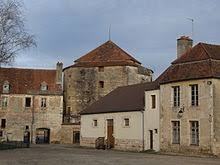
Auxonne Source en.wikipedia.org
Auxonne fortified goodish town – stopt on entering the poste de ville to shew passports and at the café opposite for café au lait for Ann had it in 22 minutes – walked forwards to the poste, and off in two minutes more at 2 18/..
Soon after Dijon on getting to the top of the 1st rising ground 1st view of a saddlebacked mountain of the Jura range – wide, fertile plain corn India around Dijon going 1st we have seen potatoes Incema grapes etc and all the way to the wooded hills en face gradually closing upon us on nearing Dôle till at 3 40/.. from the top of the hill (or mountain?) just above Dôle, very fine rich view large vine-covered sufficiently wooded plain to our right,

Mont Dore Source en.wikipedia.org
Auxonne behind us, and the good-looking town of Dôle with it’s church steeples en face backed by the long line of Jura mountains – not like alps or Pyrenees, but very fine – views for the last hour (from about 2 40/..) and all about Dôle in the rich plain, little else –
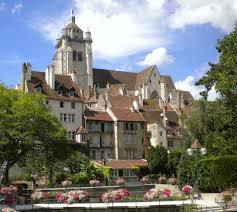
Dôle Source en.wikipedia.org
At Dôle at 4 11/.. no postillion – obliged to wait – so drove to the hotel de Paris close by – dined (very good dinner) at 5 in an hour –before and after till 6¼ wrote the above of today – Off from Dôle at 6 22/.. – no vines much beyond Dijon corn India ditto, hemp etc as before – the Jura not more than the Wolds ½ way between York and Market Weighton now at 8¼ - picturesque ville’s all today
– At la poste Mont Sous Vaudré at 8 35/.. – a mere auberge –but a nice enough double bedded room and wanting no dinner nor breakfast in the morning (but which by the way would I daresay have been very fair) we do very well – some little more than usual difficulty in bargaining for the 4 beds for 6/- fine morning, tho’ blackish clouds about soon after 12, and showers in the afternoon, but fair and fine from between 4 and 5 for the rest of the evening – Fahrenheit 68º at 9pm -
WYAS Reference Number SH:/7/ML/E/17/0046
1 note
·
View note
Text
Page IVI — Sapien
Awake 9:something —
Exhaustion hangs on my frame with the warm weight of a wet coat, pulling me down into a syrupy pool of viscous motion. Everything becomes a slow epiphany, stinging thoughts now vaporous caresses — I know, I know I should be afraid of my future, I know I can't give an inch, but I can't feel the misery of not being quite enough for myself and I don't miss it. Our 3 am conversations drew me closer to the crimson-lit back alleys of my consciousness without the fear of being self-assailed at dawn. While I’ve regretted drunken confessions, the catharsis of somber, poised honesty leaves my dignity intact and I feel blurry and clean instead of poisoned. If I could live in this tender fugue, I might be able to fake this fearlessness, be a thoughtless passenger letting fate take me without so much self-induced terror. B thinks it's pointless to fear the inevitable — and pain is inevitable. I wish I was as good as he is at talking myself into believing I can withstand it. But our similarities are purely linnaean, our natures are as different as snow and sand. He doesn't understand, — when he tells me it's not worth worrying about, to let go of what I cannot change, that it doesn't really matter, — I don't know how. I can't stop being what I am. I don’t know how. — 10: 15 ———————————
What I heard: Stampede of ducks paddling across our roof
What I saw: B and F playing hopscotch in ill-fitting flip flops
What I felt: Disappointment
———————————
Sometimes, I wonder if someone will find this. I know I probably won't see the day coming, when I stop writing, this may be one piece of me left behind and I think of it often. Am I really at peace with what others could discern from its contents? I cannot remember everything I've written now but I think I should resist the temptation to revise myself...
There's is a unique joy in discovering when someone's written in the margins of a old book. Like tarot cards, I brush my fingers over their spines, trying to detect an ambient trace of someone who was there before. Their notes like an echo through time, the light of a dead star, far away where I am too late and you are too early, and I have only the briefest glimmer of whoever once shared this same page. Perhaps decades, one day centuries apart, my ghost and yours, meet in the only way ghosts can, surmounting time and space. Like the scars of childhood falls and animals we've outlived, old companions now sleeping beneath autumn trees, cradled in quiet roots and waiting. Hmm.
Homo Sapien
Homo Sapere... Greek and Latin Did you know sapien means 'the ones who know'? I've always found that poetic. Can you image being another species, finding out that this strange, upright, poorly gifted creature calls themselves 'the Sapiens', and designed an entire taxonomy to categorize the world in which they are 'the ones that know '? Sapien. It carries the same cadence of sniper and snake and sin, and that seems oddly fitting, it has a hissing bite that slides off the tongue like a resigning breath... But, what is it we know — the sapiens? Do you think it's something that you and I share now? Sapien must refer to something from before we knew our genetic makeup or the forces holding us together, something inherent that would have allowed you and I to witness each other and say 'Ah, we are one and we are the ones that know.' You and I, celestial travelers on different currents, adrift in this vast, untamed night, one seeing the other in the foot prints left in the sands of time. Perhaps, yours left behind only for someone else to one day follow the remnants of your dying light... I find that quite terrifying, honestly; This recognition that there is someone else that could be following the path I've traversed while I have nothing to impart, no warning to save or spare you of anything that lies ahead. I am just another blind creature groping in the infinite darkness for something like enlightenment. I cannot say I know why you are here, where I stood, or where the way out of all this lies or if we just grow tired and lay down to rest only to find it far too comfortable to ever get up again. Like our many friends resting in the back gardens. But we are homosapiens. The ones that know. You and I. What we both know... Something that makes us the same. Something extraordinary and exclusive. — Do you think it is death ? The acknowledgement of our own mortality, before it even arrives ... Is that it? I hope not. It seems useless to be 'the ones that know' the inevitable, the immutable. I would rather believe it is something profound and not merely a recognition and naming of the forces that bind and destroy us. Of all creation, if I were evaluating the lifeforms of this planet, I would hope that 'the Sapiens' are in possession of something greatly worthy of coveting, something others should desire to know... The key in nature's lock. Knowledge of how to improve the world, bring something to the system that guides it — But not for greater efficiency or utility. You see, if so many are concerned with leaving this place a 'better world ', shouldn't that mean a place one would want to be born into without any reservations on the bodies or banners they will be born unto? Should what we 'know' not be the way forward for us all? I think what we know, what makes us the Sapiens is justice, mercy and hope. That is what I want to believe we know.
9 notes
·
View notes
Text






#pitcher plant#nepenthes#carnivorous plants#greenhouse#linnaean gardens#botanical garden#uppsala#sweden
22 notes
·
View notes
Text


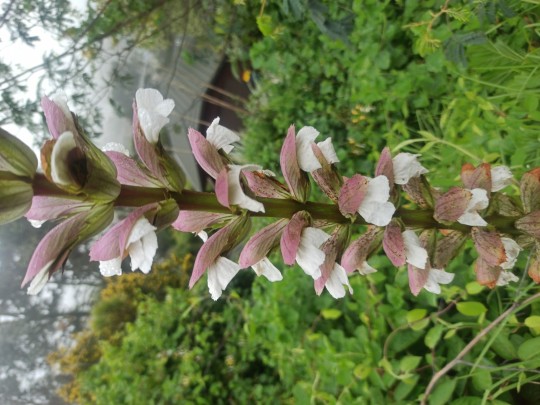

Bear's breeches, a species of Acanthus
Also known as:
•Sea dock
• Bearsfoot
• Oyster plant
• Bear's breech
• Brank ursine
·Common bear's breech
•Soft-leaved bear's breech
Botanical name: Acanthus mollis
Bear's breeches (Acanthus mollis) is a perennial plant native to the Mediterranean region of Europe from Portugal to North Africa. Bear's breeches grows commonly in the wild and is often used as a garden plant. The acanthus leaves of this plant are seen throughout history in sculptures, columns, and furniture. According to the plant taxonomy expert William Stearn, the name Bear's Breech comes from the medieval (Pre-Linnaean) latin name "Acanthus sativus branca ursina" which means "Cultivated Spiny Bear Bract". This is because they felt that the curved bracts on the flower stalk looked like a bear claw.
188-192 Browns Bay Road, Browns Bay, Auckland 0630
-36.7309500, 174.7354780
7P9P+J5H Auckland
0 notes
Text
On the edges of paintings, on far backgrounds that often go unnoticed, one finds perfectly identifiable species of trees, plants, and flowers, as well as scattered populations of animals depicted as precisely as in a natural history and thus capable of being classified with full Linnaean rigor by an attentive eye. In The Garden of Earthly Delights, Bosch managed to smuggle into Paradise a Canary Islands dragon tree. If the eye of a draughtsman or a painter can be very useful when observing nature, the eye of a naturalist can be just as helpful when looking at paintings in a museum. The two were once kindred practices. Painters began to acquire anatomical knowledge long before physicians. Galileo was able to see and draw the craters of the Moon because he had learned from Leonardo’s chiaroscuro.
Situated side by side, the gardens and the museum reveal more clearly their common origin, the fact that they belong to the same enlightened project of instruction and classification.
https://hudsonreview.com/2021/05/rounds-of-the-prado-the-place-of-painting/
0 notes
Photo


Linnaean Gardens of Uppsala, Sweden.
Linnaeus’ motto ‘Omnia mirari etiam tritissima’ is set into a plaque at the gate of the Linnaean Gardens. It translates to ‘Find wonder in everything, even the most commonplace’.
(with thanks to theplanthunter)
8 notes
·
View notes
Text
Mad scientists. “No Nature without Empire”. “Science and Empire are cause and effect”. Appropriating Indigenous knowledge, obscuring Indigenous agency. Botanists as “agents of empire”. Botany as a weapon, an instrument to act-at-a-distance. The use of science/academia to consolidate empire and reinforce racism and colonialism. Examples from Latin America.
---
Political botany ignored local features, while boosting monoculture and encouraging acclimatization mainly in the metropolis. [...] Botany began as a technoscope – a way to visualize at-a-distance – but, at the end of the eighteenth century, it was already a teletechnique – a way to act at-a-distance. [...] Digestion is a process of annexation of the attributes of plants […]. Managing a country is nothing more than selecting the plants to be produced and controlling the circulation of those that are consumed.
---
In this conception operating in the eighteenth century, there is no Nature without Empire. […]
To “de-anthropologize” the knowledge of plants, also involved “de-locating,” or better still, “de-territorializing” it. Botany was emerging as a science separate from medicine, but also from chorography as territory became a vegetal mantle, a sort of carpet for plants to lie upon. […]
Botanical nomenclature was also a matter of political nomenklatura: the exclusion of native names from the field of science defined new power relations. It acknowledged the authority of imperial botanists and belittled local herbalists and herbal practitioners. Nomenclature, indeed, displaced traditional wisdom: Nahuatl came to be considered as an unintelligible, garbled language, fit (as was remarked in 1788 by Vicente Cervantes (1755-1829) the botanist appointed director of the Botanic Garden in Mexico) “…to be spoken in public places and small groups, with Indian women selling herbs and vegetables, but not in academies of the learned.” […]
---
Science and Empire are cause and effect of one another: they are not identical; each determines and is defined by the other. […] When [expeditionary scientists and] travelers return [from surveys], they, as well as those who sent them, share the belief that these papers – these representations of nature – can lead to an exact knowledge of nature despite the great distance of its remove from the metropolis: knowledge, in other words, becomes manifest in a network. […] A network projects the range of sight and extends the reach of the hand. So, it is a technoscope that depends on Empire and at the same time underpins it: in short, it is a device used to know at-a-distance. [...]
The Empire demands a policy to organize plants, while in the colonies they need a type of botany to create the polis. […] Institutions that understood these newly emerging requirements gained levels of influence and cultural profiles unthinkable a few decades earlier. Their function ceased to be courtly and became imperial. Their savants [their scientists] no longer resembled collectors or antiquarians, but became instead agents in charge of governing Nature. […]
---
In this sense, Linnaean botany […] is a form of biopolitics […] and the only thing that matters in what we might call “imperial biopower” is how to turn diversity, local variation, and qualia into data. […] Linnaeus’ system [as employed by European expeditionary scientists and surveyors] was very efficient [...]. This method stressed the idea of Nature as the set of laws and rules that allows the government of an Empire. […] At the same time, systematics represents a useful simplification of reality that enabled expeditions to finish the immense tasks with which they were charged in a reasonable length of time. It provides an efficient way to create an economy of space founded on a logic of resemblance, shortening the time and work needed to draw some conclusions of political consequence. Mocino, for example, noted extraordinary floral continuity between Mesoamerican and Guatemalan territories, which appeared to confirm the political unity enforced from Mexico City. […]
---
This spatial strategy tends to identify certain regions with some characteristic species. This allowed a selective fostering of farms and forestry in those areas rich in species of particular interest to the Spanish Crown.
Plants ceased to be the business of experts and became the concern of politicians. Botany came to strengthen imperial politics.
Botanical policy developed into political botany and, just as we now talk of environmental crises, there was much talk then of the decadence of nature and the erosion of the empire. […]
If political economy gave relevance to the historicity of resources and peoples, political botany ignored local features, while boosting monoculture and encouraging acclimatization mainly in the metropolis. The plants themselves and not their products became the stuff of trade, and what circulated through the networks were ideas on how to mobilize species and how to denature them.
Botany began as a technoscope – a way to visualize at-a-distance – but, at the end of the eighteenth century, it was already a teletechnique – a way to act at-a-distance.
Its success as an imperial undertaking was linked to the ability to set up an international network of professorships, gardens, expeditions and publishing companies able to produce aversion of Nature easily put into words, and deducible from very little data. […]
Digestion is a process of annexation of the attributes of plants […].
Managing a country is nothing more than selecting the plants to be produced and controlling the circulation of those that are consumed.
---
Text by: Antonio Lafuente and Nuria Valverde. “Linnaean Botany and Spanish Imperial Biopolitics.” A chapter in Colonial Botany: Science, Commerce, and Politics in the Early Modern World. 2004. [Italicized first paragraph/heading in this post added by me. Bold emphasis and some paragraph breaks/contractions added by me.]
#ecology#indigenous#tidalectics#multispecies#ecologies#black methodologies#geographic imaginaries#opacity and fugitivity#carceral geography#intimacies of four continents#indigenous pedagogies
152 notes
·
View notes
Text
The Miracle Of Easy Bird Painting | Easy Bird Painting
#Savevedanthangal

Bird Painting Easy at PaintingValley.com | Explore .. | easy bird painting
#IAmDehingPatkai
#Dibang

Two Berry Creative Simple Birds Painting Stencil Set – easy bird painting | easy bird painting
Vedanthagal Bird Altar in Tamil Nadu, Dehing Patkai wildlife assets in Assam, Dibang Valley in Arunachal Pradesh. You accept apparently apparent one or added of these hashtags trend on your amusing media timelines over the accomplished brace of months. You accept apparent Ministers on Twitter, cartoonists on Instagram, pop stars on Facebook, and standup comedians on YouTube accompany them up, in conversations, via account reports, and best intriguingly, through art.
The protests that hit the streets in 2019, accept confused online in 2020. And art is arena a huge allotment in these movements, decidedly student-spearheaded ones, such as Dehing Patkai’s.
YOU can paint this snowy cardinal! | The Frugal Crafter Blog – easy bird painting | easy bird painting
In May, Instagram in accurate saw a battery of artwork in abutment of the wildlife sanctuary, afterwards letters came out of approval accustomed to atramentous mining (which has back been put on hold) in genitalia of Dehing Patkai Elephant Reserve. The assets encompasses not alone the sanctuary, but additionally a cardinal of backwoods affluence and burghal settlements.
Painting afterwards painting began to be circulated: of elephants active by fire, confronted with mining equipment, or belted in nature.

Chickadee bird paintings 5×5 original oil painting of – easy bird painting | easy bird painting
A ample cardinal of them were created by students, but one of the ancient ones — in April — was by a teacher. Deborshee Gogoi, an abettor assistant at Digboi College of Assam, has created a cardinal of artworks since: some are emotive, while others focus on actuality informative. The closing class includes a alternation that lists the biodiversity of the park: a advanced array of primates, kingfishers, hornbills and cats.
Says Gogoi over a buzz alarm from Digboi, “The account came on April 21, and I fabricated the account on

Gillian Lawler and Mark Cullen, No easy bird of flight remains .. | easy bird painting
The Miracle Of Easy Bird Painting | Easy Bird Painting – easy bird painting | Allowed for you to the website, in this period I’ll provide you with about keyword. Now, this is actually the 1st picture:

“Animals are Cool” kitchen/tea towel. 27”x18” Fat Quarter of linen cotton canvas. My original design, hand drawn by me digitally. Soon to be sewn up as a gift probably | easy bird painting
How about graphic preceding? is that will incredible???. if you think consequently, I’l l show you many image yet again below:
So, if you wish to receive these magnificent pics regarding (The Miracle Of Easy Bird Painting | Easy Bird Painting), press save link to download these pictures to your computer. These are prepared for transfer, if you like and want to obtain it, just click save symbol in the post, and it will be immediately down loaded in your computer.} At last in order to have unique and the latest photo related to (The Miracle Of Easy Bird Painting | Easy Bird Painting), please follow us on google plus or book mark this page, we try our best to offer you daily up-date with all new and fresh graphics. Hope you love keeping here. For most up-dates and latest news about (The Miracle Of Easy Bird Painting | Easy Bird Painting) photos, please kindly follow us on tweets, path, Instagram and google plus, or you mark this page on bookmark section, We try to present you update regularly with all new and fresh photos, like your surfing, and find the right for you.
Thanks for visiting our site, articleabove (The Miracle Of Easy Bird Painting | Easy Bird Painting) published . Nowadays we are pleased to announce that we have discovered a veryinteresting topicto be reviewed, that is (The Miracle Of Easy Bird Painting | Easy Bird Painting) Many people looking for info about(The Miracle Of Easy Bird Painting | Easy Bird Painting) and definitely one of them is you, is not it?

Easy Watercolor Painting – Sunset Bird | Paint with David – easy bird painting | easy bird painting

Unavailable Listing on Etsy – easy bird painting | easy bird painting

Adele Loomans Fine Art: Eunice's Blue Bird – easy bird painting | easy bird painting

Image result for easy bird paintings on canvas for beginners .. | easy bird painting

How To Paint A Snowy Cardinal – Step By Step Painting – easy bird painting | easy bird painting

8 Simple Clay Pot Lighthouse Projects for Your Garden .. | easy bird painting

easy bird paintings on canvas for beginners – Google Search .. | easy bird painting

Take It Easy: Bird Painting by kto ART – kto ART – easy bird painting | easy bird painting

Mama bird with baby birds painting blue gold diy canvas painting .. | easy bird painting

9+ Simple Paintings – easy bird painting | easy bird painting

chasing the red rose, scott richard – easy bird painting | easy bird painting

Easy to Learn Flower and Bird Painting(CD Attached. Grass and .. | easy bird painting

Simple Wall Paintings Birds Amazing Enhance Your Space With – Digital – easy bird painting | easy bird painting

How to paint a bird for rock painting and other projects – Rock .. | easy bird painting

the mighty rainbow rose, painting by scott richard – easy bird painting | easy bird painting

Eastern Bluebird bird painting Open edition print – easy bird painting | easy bird painting

This image is taken from Page 103 of An arrangement of British plants; according to the latest improvements of the Linnaean system. To which is prefixed, An easy introduction to the study of botany | easy bird painting

Easy Birdwatching with Kids | Play | CBC Parents – easy bird painting | easy bird painting
Painter Legend https://i0.wp.com/www.painterlegend.com/wp-content/uploads/2020/06/bird-painting-easy-at-paintingvalley-com-explore-easy-bird-painting.jpg?fit=713%2C582&ssl=1
0 notes
Photo

Photocopy of October 1, 1903 photograph. Glass negative in Paul A. Kohl's office, Missouri Botanical Garden. VIEW FROM THE SOUTHEAST, SHOWING ORIGINAL CENTRAL CHIMNEY AND IRON ROOF RIDGE CRESTING - Missouri Botanical Garden, Linnaean House, 2345 Tower Grove Avenue, Saint Louis, Independent City, MO
0 notes